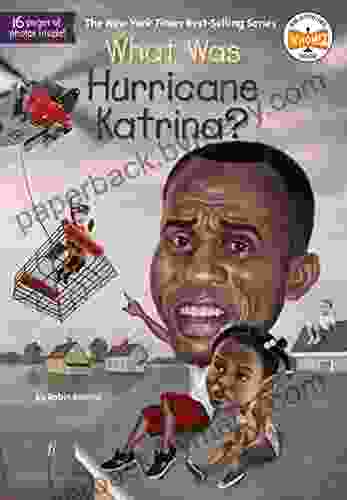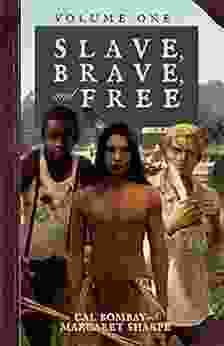What Was Hurricane Katrina: A Comprehensive Guide

Unveiling the Catastrophic Forces

4.8 out of 5
| Language | : | English |
| File size | : | 81914 KB |
| Text-to-Speech | : | Enabled |
| Screen Reader | : | Supported |
| Enhanced typesetting | : | Enabled |
| Word Wise | : | Enabled |
| Print length | : | 114 pages |
Hurricane Katrina, a Category 5 storm, emerged as a formidable force in the warm waters of the Atlantic Ocean on August 23, 2005. As it relentlessly approached the Gulf Coast, it rapidly intensified, unleashing its fury upon the coastal communities of Louisiana, Mississippi, and Alabama.
The Devastating Impact
On August 29, 2005, Hurricane Katrina made landfall near Buras, Louisiana, with devastating consequences. The storm surge, reaching heights of over 20 feet, breached the levees protecting New Orleans, inundating the city with catastrophic flooding.
The flooding claimed the lives of over 1,800 people, displaced hundreds of thousands, and left behind a trail of destruction that would take years to repair. New Orleans, once a vibrant city, was reduced to a scene of utter devastation.
Aftermath and Recovery
The aftermath of Hurricane Katrina exposed systemic failures in disaster preparedness and response. The federal government's inadequate response and the lack of coordination among local, state, and federal agencies drew widespread criticism.
Recovery efforts were slow and complex, involving the rebuilding of homes, businesses, and infrastructure. The rebuilding process also sparked debates about urban planning, environmental protection, and the role of government in disaster recovery.
Legacy and Lessons Learned
Hurricane Katrina left a lasting legacy on the Gulf Coast and the nation. It highlighted the vulnerability of coastal communities to natural disasters and the importance of disaster preparedness.
The storm also spurred scientific research into hurricane formation, intensification, and prediction. This research has led to improved forecasting models and early warning systems, helping to save lives in subsequent storms.
The Science Behind Hurricane Katrina
Hurricane Katrina formed over the warm waters of the Atlantic Ocean, fueled by the release of latent heat from rising air. As it moved westward, it encountered favorable atmospheric conditions that allowed it to intensify into a powerful Category 5 storm.
The storm's immense wind speeds, reaching over 175 miles per hour, generated a massive storm surge that inundated coastal areas. The flooding, combined with the high winds and heavy rains, caused catastrophic damage to infrastructure and property.
Hurricane Katrina was a devastating natural disaster that forever changed the Gulf Coast and the nation's understanding of disaster preparedness and response. Its legacy serves as a reminder of the importance of investing in disaster mitigation, improving early warning systems, and developing resilient communities that can withstand future storms.
By understanding the science, history, and societal consequences of Hurricane Katrina, we can better prepare for and mitigate the impact of future natural disasters, safeguarding our communities and ensuring a more resilient future.
4.8 out of 5
| Language | : | English |
| File size | : | 81914 KB |
| Text-to-Speech | : | Enabled |
| Screen Reader | : | Supported |
| Enhanced typesetting | : | Enabled |
| Word Wise | : | Enabled |
| Print length | : | 114 pages |
Do you want to contribute by writing guest posts on this blog?
Please contact us and send us a resume of previous articles that you have written.
 Book
Book Novel
Novel Page
Page Chapter
Chapter Text
Text Story
Story Genre
Genre Reader
Reader Library
Library Paperback
Paperback E-book
E-book Magazine
Magazine Newspaper
Newspaper Paragraph
Paragraph Sentence
Sentence Bookmark
Bookmark Shelf
Shelf Glossary
Glossary Bibliography
Bibliography Foreword
Foreword Preface
Preface Synopsis
Synopsis Annotation
Annotation Footnote
Footnote Manuscript
Manuscript Scroll
Scroll Codex
Codex Tome
Tome Bestseller
Bestseller Classics
Classics Library card
Library card Narrative
Narrative Biography
Biography Autobiography
Autobiography Memoir
Memoir Reference
Reference Encyclopedia
Encyclopedia Wayne Mcghie
Wayne Mcghie Topher Donahue
Topher Donahue Ken Phillips
Ken Phillips Kenneth Cloke
Kenneth Cloke Yang Hu
Yang Hu Hiroshi Mikitani
Hiroshi Mikitani Stephanie Baier
Stephanie Baier Rupert Russell
Rupert Russell Kerrin Cocks
Kerrin Cocks Vivien Newman
Vivien Newman Rolf Mowatt Larssen
Rolf Mowatt Larssen Suzannah Rowntree
Suzannah Rowntree Sterling Lord
Sterling Lord Paul Mooney
Paul Mooney Kianna Alexander
Kianna Alexander Myriam Jimeno
Myriam Jimeno Richard Appignanesi
Richard Appignanesi Kevin J Ryan
Kevin J Ryan Khoi Tu
Khoi Tu Vince Kotchian
Vince Kotchian
Light bulbAdvertise smarter! Our strategic ad space ensures maximum exposure. Reserve your spot today!
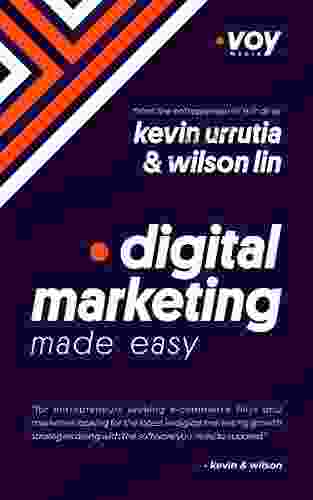
 Howard PowellDominate Digital Marketing: Your Ultimate Guide to Digital Marketing Made...
Howard PowellDominate Digital Marketing: Your Ultimate Guide to Digital Marketing Made...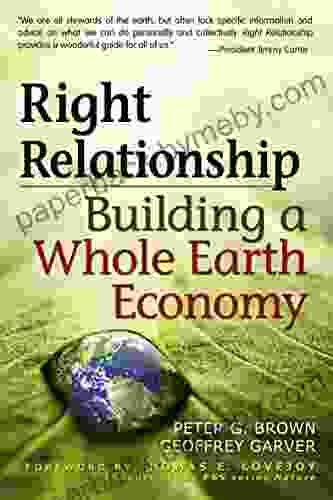
 Vernon BlairRight Relationship Building Whole Earth Economy: A Vision for a Sustainable...
Vernon BlairRight Relationship Building Whole Earth Economy: A Vision for a Sustainable...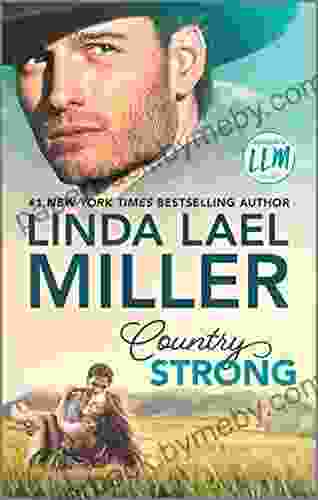
 David Foster WallaceEscape to the Heart of the West with "Country Strong: Novel of Painted Pony...
David Foster WallaceEscape to the Heart of the West with "Country Strong: Novel of Painted Pony... Joseph ConradFollow ·5.3k
Joseph ConradFollow ·5.3k Braden WardFollow ·18.4k
Braden WardFollow ·18.4k Floyd RichardsonFollow ·12.5k
Floyd RichardsonFollow ·12.5k Jayson PowellFollow ·8.2k
Jayson PowellFollow ·8.2k Elliott CarterFollow ·5.7k
Elliott CarterFollow ·5.7k Jake PowellFollow ·5.6k
Jake PowellFollow ·5.6k Brett SimmonsFollow ·4.6k
Brett SimmonsFollow ·4.6k Elton HayesFollow ·14.4k
Elton HayesFollow ·14.4k
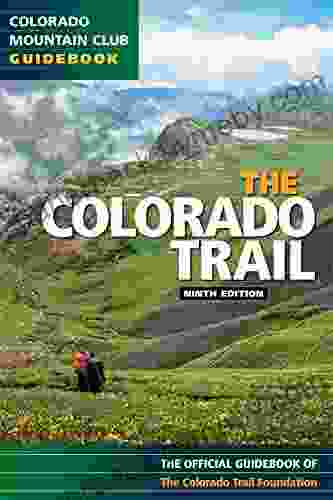
 Isaac Asimov
Isaac AsimovEmbark on an Epic Adventure: The Colorado Trail 9th...
Unveiling the Treasures of the Colorado...
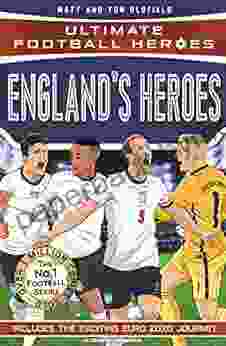
 Clinton Reed
Clinton ReedUltimate Football Heroes: Uncover the Gridiron Greatness...
Enter the World...

 Ibrahim Blair
Ibrahim BlairUnveiling the Secrets of Stolen Focus: A Journey to...
In today's relentless digital...

 Colt Simmons
Colt SimmonsRediscover the Founding Father's Vision: Thomas Jefferson...
Immerse Yourself in the Unedited Words of...

 Juan Butler
Juan ButlerExcel in Language Learning: The Ultimate Self-Study...
Unlock Your Language Potential with Our...
4.8 out of 5
| Language | : | English |
| File size | : | 81914 KB |
| Text-to-Speech | : | Enabled |
| Screen Reader | : | Supported |
| Enhanced typesetting | : | Enabled |
| Word Wise | : | Enabled |
| Print length | : | 114 pages |


